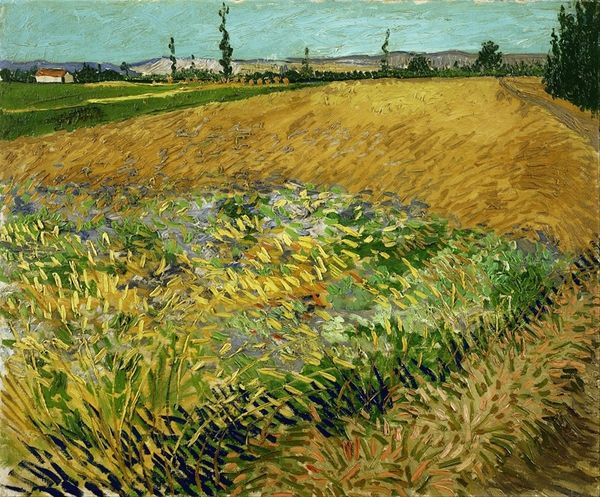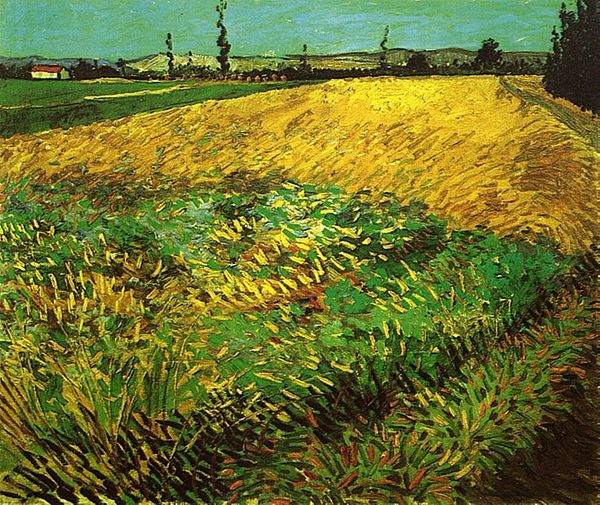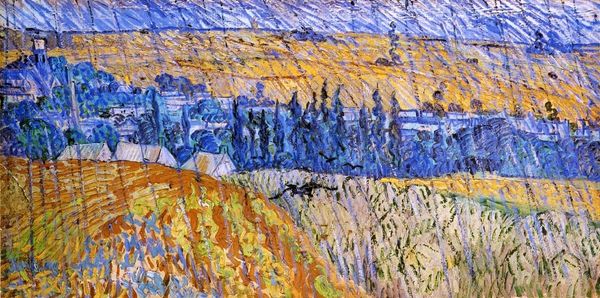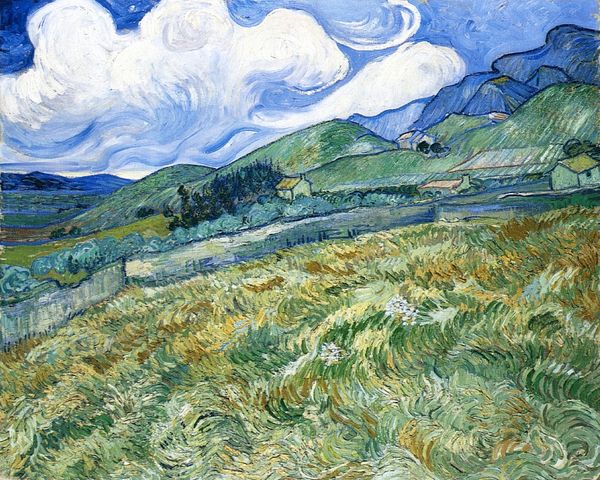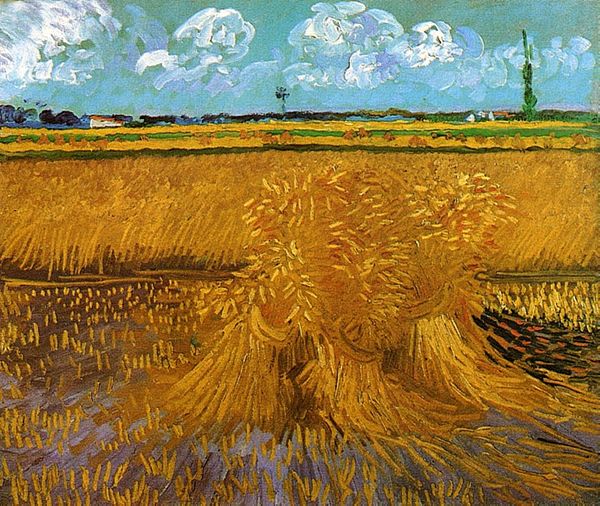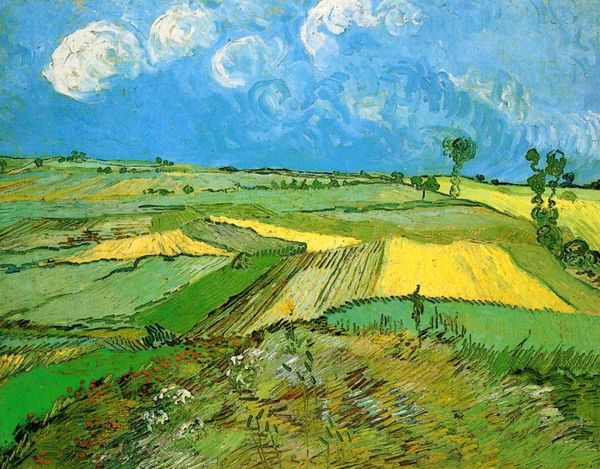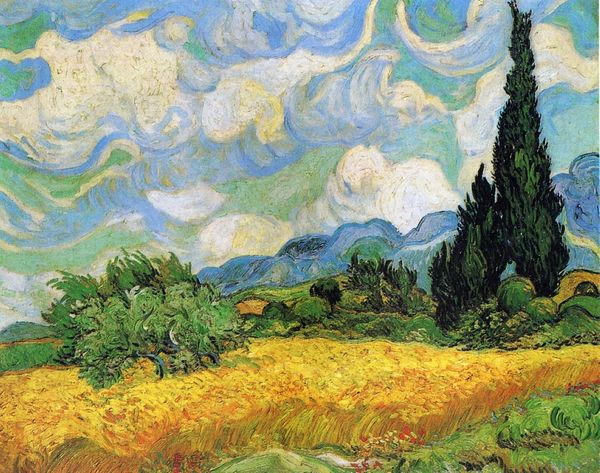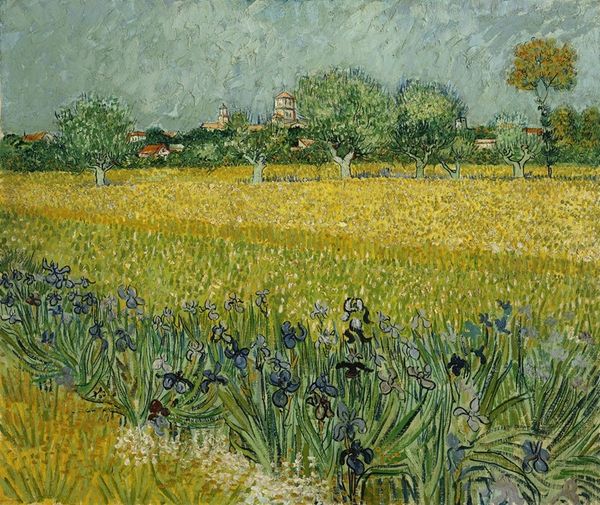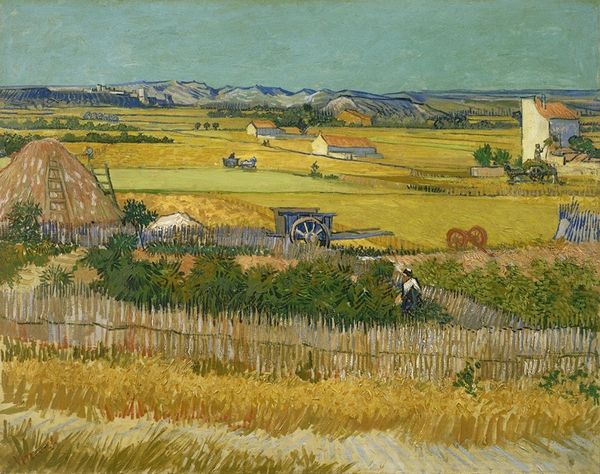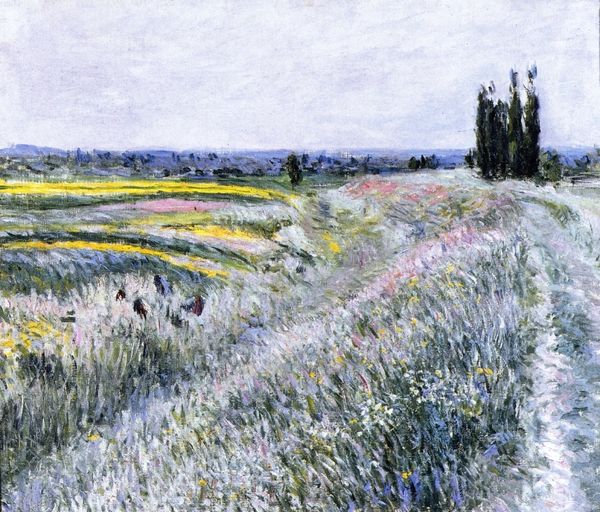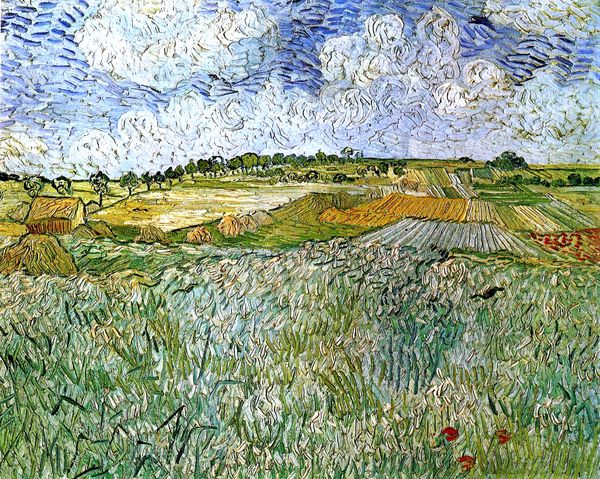
Dimensions: 50 x 61 cm
Copyright: Public domain
Curator: Welcome. The artwork before us is titled "Wheat Field," painted by Vincent van Gogh in 1888. It's an oil-on-canvas painting, showcasing Van Gogh's exploration of rural landscapes and his unique approach to post-impressionism. Artist: The first thing I see? Light. A dizzying, baking kind of light, reflecting from those golden heads of wheat, feels almost…itchy? The whole scene vibrates. Curator: Van Gogh's use of impasto—thick layers of paint—certainly contributes to that vibrancy. We can analyze this from a material perspective: How did the accessibility and cost of pigments impact his palette? The industrial production of oil paint allowed for a new freedom, a certain…boldness. Artist: Boldness indeed! He isn’t just painting wheat; he is painting the experience of wheat. The way it moves, feels, almost smells, there’s a feverish quality to it. I feel as if I am there under the heavy sunlight. What do you make of his visible brushstrokes and technique here? Curator: His characteristic brushstrokes reveal much about his labor. These expressive marks underscore a departure from the idealized rural scenes found in earlier academic painting. He reveals labor instead. We are made aware of the amount of strokes necessary to fill the canvas. Think also about the materials—coarse canvas, the application of thick layers suggesting his rapid, almost frantic, pace. He must have worked at speed with intense concentration. Artist: Frantic! Yes, exactly, a dance between control and raw energy. Do you think we can also appreciate his color palette? Those yellows and golds, juxtaposed with the blues of the sky… It’s more than just observation, it’s deeply emotional, as the season turns. Curator: Color usage then is less mimetic and more of a commodity used strategically by the painter. His manipulation and intensification served a rising market for decorative paintings during the late 19th century, while pushing the limits of his labor and artistic expression within prevailing social-economic conditions. Artist: Fascinating how all these details coalesce into something that just sings. I see the heat, labor, and the very life force pulsating from the scene before us. Curator: Precisely. Examining "Wheat Field" through materialist lenses lets us appreciate the economic, social, and productive forces interwoven within the artwork, broadening its artistic appeal, as it remains an enduring masterpiece.
Comments
No comments
Be the first to comment and join the conversation on the ultimate creative platform.
